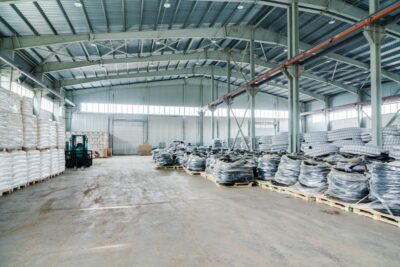In the realm of construction, steel buildings have steadily gained prominence, yet persistent myths often cloud their true advantages. While traditional construction materials have a long-standing history, the evolution of steel as a primary building component has been met with its share of misconceptions. It’s time to cut through the noise and reveal the compelling reality of modern steel structures, separating fact from fiction and showcasing why they’re a superior choice for a myriad of applications.
Myth: Steel Buildings Are Ugly and Industrial
One of the most pervasive myths is that steel buildings are aesthetically unappealing, resembling nothing more than industrial boxes or drab warehouses. This couldn’t be further from the truth. Modern steel buildings offer incredible design flexibility. The inherent strength of steel allows for vast, open-span interiors, enabling creative architects and builders to design structures with unique shapes, soaring ceilings, and expansive glass facades.
Steel can be easily integrated with a variety of exterior finishes, including brick, stone, wood, stucco, and decorative metal panels. This means a steel building can seamlessly blend into any architectural style, from a rustic farm building to a sleek, modern commercial complex or even a charming barndominium. The days of cookie-cutter steel structures are long gone; today’s designs are limited only by imagination.
Myth: Steel Buildings Are Always More Expensive
Another common misconception revolves around cost, with many believing that steel buildings are inherently more expensive than their traditional counterparts. While the initial material cost for steel might sometimes be higher per pound, the overall project cost often tells a different story. Steel buildings are prefabricated off-site, meaning components arrive ready for assembly. This significantly reduces construction time and, consequently, labor costs.
Less time on-site also means fewer delays due to weather and less disruption to surrounding areas. Furthermore, the durability and low maintenance requirements of steel buildings translate to substantial long-term savings. They’re less susceptible to rot, pests, and fire, reducing insurance premiums and eliminating costly repairs associated with traditional materials. When considering the total cost of ownership over the lifespan of a building, steel often emerges as the more economical choice.
Myth: Steel Buildings Are Prone to Rust
Then there’s the myth about steel buildings being prone to rust and corrosion. While it’s true that raw steel can rust when exposed to moisture and oxygen, modern steel buildings are meticulously engineered to prevent this. High-quality steel components are treated with advanced protective coatings, such as galvanization or specialized paints, that provide excellent resistance to corrosion.
These treatments create a barrier that shields the steel from the elements, ensuring its longevity even in harsh environments. Furthermore, proper drainage and ventilation are incorporated into designs to prevent moisture buildup. With minimal routine maintenance, a steel building will maintain its structural integrity and aesthetic appeal for decades, far outlasting many other building materials.
Myth: Steel Buildings Are Poor Insulators
A surprising number of people also believe that steel buildings are poor insulators and lead to high energy costs. This myth likely stems from the perception of steel as a conductor of heat. However, modern steel buildings are designed with energy efficiency at their core. The cavities within steel framing provide ample space for various types of insulation, including fiberglass batts, rigid foam panels, and spray foam, which offer superior thermal performance.
When properly insulated, a steel building can be incredibly energy-efficient, maintaining comfortable interior temperatures while significantly reducing heating and cooling costs. The tight construction of steel also minimizes air leakage, further contributing to energy savings and creating a more comfortable indoor environment.
Myth: Steel Buildings Are Hard to Modify
Finally, there’s the concern that steel buildings are difficult to modify or expand once built. This is another misconception that couldn’t be further from the truth. One of steel’s greatest advantages is its adaptability. Unlike rigid traditional structures, steel buildings are inherently modular. Their bolt-together construction allows for relatively easy expansion by adding bays or extending walls.
Interior modifications, such as reconfiguring layouts or adding mezzanines, are also straightforward due to the clear-span capabilities and ease of attaching new components to the steel frame. This flexibility makes steel buildings an excellent choice for businesses or individuals whose needs may evolve over time, offering a future-proof solution that can adapt to changing requirements with minimal disruption and cost.
Conclusion
The myths surrounding steel buildings are largely relics of a bygone era or misunderstandings of modern construction techniques. Today’s steel structures are a testament to innovation, offering unparalleled strength, design versatility, cost-effectiveness, durability, energy efficiency, and adaptability. By debunking these common misconceptions, we can truly appreciate the superior advantages that steel buildings bring to the contemporary construction landscape, proving them to be a wise and forward-thinking investment for almost any application.
View the original article and our Inspiration here


Leave a Reply